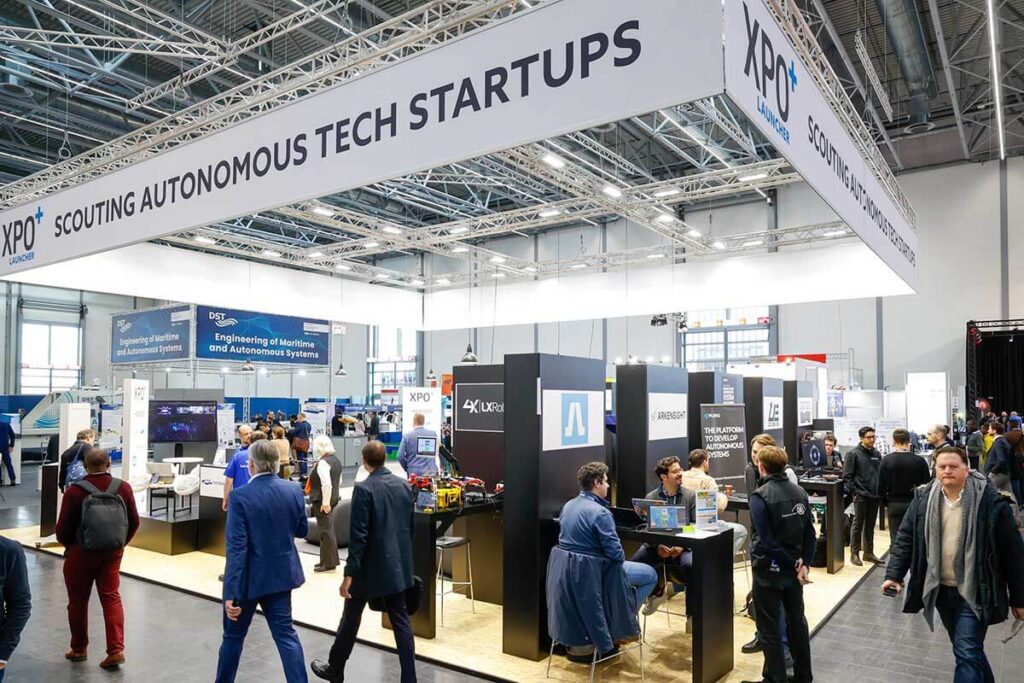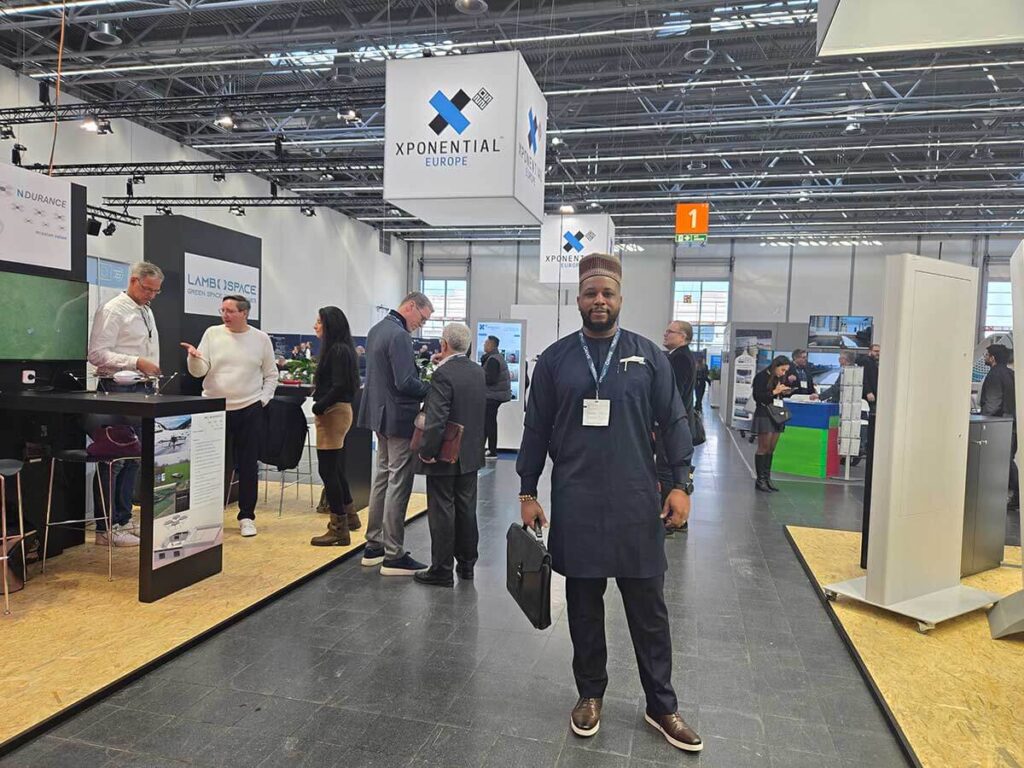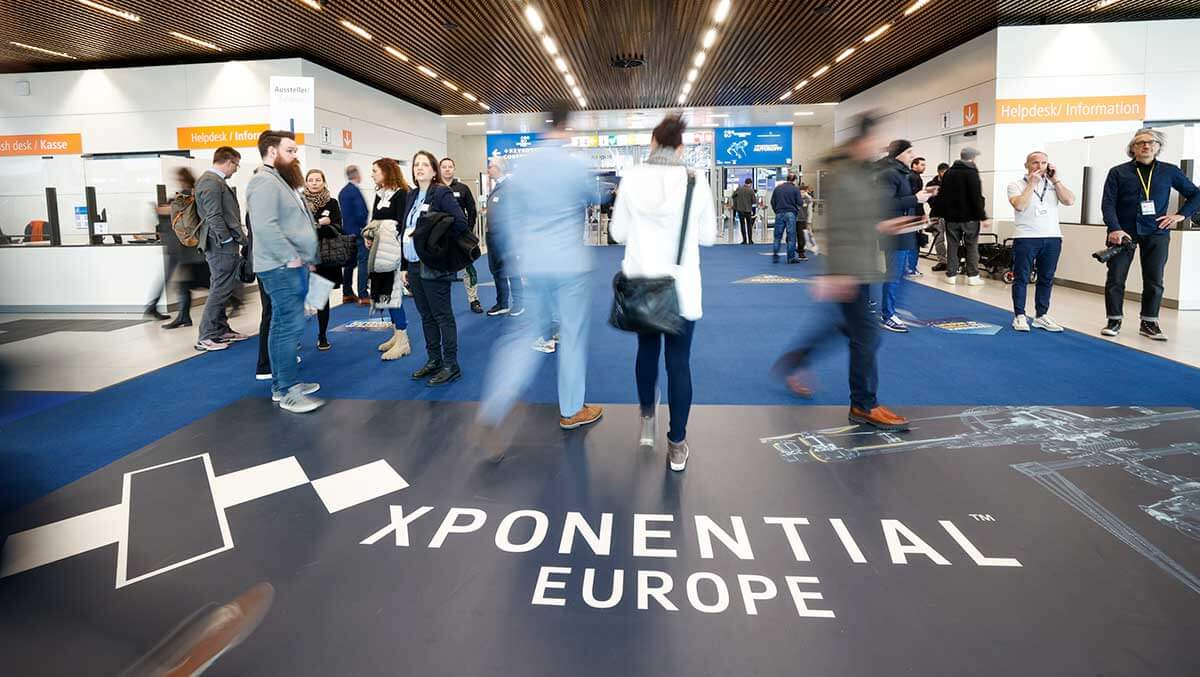By: Eno Umoh, AG Business & Entrepreneurship Ambassador
As we fast approach XPONENTIAL 2025 in Houston, I took a few minutes to reflect back on the XPONENTIAL Europe 2025 in Düsseldorf a few months ago. It was nothing like your typical drone show.
If you’ve been in this industry long enough, you know not all drone events are created the same. Some are hyper-niche. Some are crowded and chaotic. And many still frame everything around “drones.” But XPONENTIAL is leaning into something bigger: autonomy. Not just airframes, but full-stack systems, multi-domain integration, AI, edge computing—you name it. This was less a drone show and more an autonomy show that happened to feature drones.
So if you missed it, don’t worry. I put together 9 takeaways that stuck with me and that can help inform your global business plans and your thinking, if you plan to roam the XPO Hall in Texas in a few weeks!

1. The European Autonomy Scene Is Playing the Long Game
Over the years, there’s a certain energy that comes with shows. Big hype. Fast promises. Everyone’s chasing the next funding round or headline. Europe? A totally different feel.
The tone here was measured. Strategic. You could see it in how startups pitched—less flash, more structure. Less “look at what we built,” more “here’s how we fit into existing frameworks and national strategies.”
A lot of the discussion centered on policy alignment, integration and long-term rollout plans. Not just for drones, but for everything under the autonomy umbrella—ground robotics, AI logistics, air mobility, it was all there.
That’s not to say they’re moving slow. They’re just building differently. There’s a sense that they’re setting the foundation now so the industry doesn’t collapse under its own weight five years from now.
It’s clear: Europe’s not trying to win the short game. They’re aiming for staying power.
And if you’re a U.S.-based company eyeing global expansion? Pay attention to how European players are positioning themselves—not around speed, but around sustainability. There’s a lot to learn from that.
2. U.S.- European Partnerships on Display
One thing that stood out was how much real collaboration is already happening between U.S. and European companies.
An example of this was AgEagle Aerial Systems. The Kansas-based drone and sensor manufacturer had a presence that made it clear they’re serious about Europe. They’ve been steadily expanding their footprint, and their team used the event to build relationships and scope out potential tech and distribution partners across the EU.
Another standout was Taisync, a U.S.-based company known for its long-range HD video transmission systems. Their tech is being integrated into several European drone platforms where secure, low-latency video feeds are critical—especially in use cases like inspection and first response.
You could feel the shift: Europe isn’t just buying American tech—it’s building with it. Companies on both sides are starting to see the value in co-developing solutions that fit the needs of different markets.
And with the U.S. imposing new tariffs on Chinese-made drones and components, those conversations are getting more urgent. A few U.S. companies I spoke with were actively exploring European manufacturing partnerships—not just for access to markets, but to protect their supply chains from future shocks.
Bottom line? If you’re a U.S. company looking at Europe, show up with a long-term mindset. The appetite for partnership is there—but only if you’re ready to collaborate, not just sell.
3. Policy-Grounded Conversations
A lot of the deeper regulatory discussions were led by UAV DACH. They’re a trade association made up of manufacturers, operators and other key players in the unmanned aviation space. More importantly, they’ve been around for a while and are known for working directly with EU regulators on airspace rules, especially around beyond visual line of sight (BVLOS) and U-space.
This year, they co-hosted the European Drone Forum—a two-day event inside XPONENTIAL that focused on policy, integration and what safe commercial drone operations should actually look like. It wasn’t flashy. But it was solid.
Sessions focused on topics like building public trust, setting up risk-based frameworks, and helping regulators understand what’s actually happening in the field. Their panels brought together voices from both industry and government.
What I appreciated was the tone: less buzzwords, more practical steps. No one was trying to sell a dream. It was more about, “Here’s where we are. Here’s what needs to happen next.”
If you’re trying to do business in Europe, understanding how UAV DACH works—and who they work with—is a good place to start. You don’t need to be on stage. But you do need to be in the room.
4. Startups Run the Show
If you wanted a glimpse into the future of autonomous tech, the XPO+ Launcher pitch stage at XPONENTIAL Europe was the place to be. Serving as a judge for the startup competition, I witnessed firsthand the caliber of innovation on display.
Standout Startups included:
- Arkensight: This Croatian startup clinched first place with their AI-driven aerial image analysis platform, designed to simplify and accelerate data interpretation. Their victory earned them a booth at XPONENTIAL in Houston and exclusive mentorship opportunities.
- Cast Coil: Based in Münster, they secured second place by developing advanced coils aimed at enhancing drone motor efficiency.
- Pleno: Hailing from Berlin, Pleno took third place with their platform focused on optimizing AI and robotics algorithms for drone applications.
These startups showcased solutions that have been tested in real-world scenarios with paying clients. Their teams displayed a deep understanding of their target markets, emphasizing practical applications over theoretical ideas.
5. Face-to-Face Still Wins Deals
Since the pandemic, many of us have gotten used to Zoom, Slack channels and endless email back-and-forth. But none of them beat being in the room and shaking hands.
Some of the biggest deals didn’t happen on stage—they started in the hallway. Or over coffee. Or in a quiet corner at one of the evening mixers. A quick booth demo that led to dinner.
If you’re planning to show up at these events, show up fully. Don’t just hit the expo floor and leave. Pack your calendar. Attend the private receptions, the partner dinners, the small invite-only round tables. That’s where the real conversations happen.
Autonomy might be tech-driven, but relationships still drive the industry. And trust? That’s the currency.
6. Africa’s Role in Global Autonomy Is Growing
Regulators, investors and CEOs were asking real questions: “What’s happening in Kenya?” “How’s Rwanda scaling BVLOS so fast?” “What can we learn from Ghana’s drone delivery networks?”
Why? Because Africa is doing what many developed countries haven’t figured out yet: scaling autonomy in ways that actually work for the people on the ground.
Governments are working with startups. Drone corridors are live. Public health missions are being supported by real tech. And all of this is happening with far less red tape, bloated budgets or wait-and-see bureaucracy.
7. AAM Is Heating Up — But People Are Staying Grounded
Yes, there was buzz around Advanced Air Mobility (AAM). But it wasn’t the kind of overhyped, headline-chasing energy we’ve seen in the past.
Instead, here’s what stood out:
- Fewer flashy promises. No one’s saying “we’ll have flying taxis everywhere by next year.” People are done with that narrative.
- More focus on infrastructure and regulation. Where will these vehicles land? How will they integrate with existing air traffic? These were the real questions being discussed.
- Airspace management is the elephant in the room. Everyone agrees AAM isn’t going anywhere until there’s a clear framework for how these aircraft will operate safely alongside traditional aviation.
You could tell the companies pitching AAM weren’t just selling ideas — they were trying to get serious buy-in from cities, regulators, and transportation leaders. That’s a good sign.
And it’s worth noting: Europe’s approach to AAM is more measured than the U.S. The vibe is, “We’re interested. We’re building. But we’re not rushing.” This restraint isn’t hesitation—it’s strategy.
8. Cross-Border Collaboration Is No Longer Optional
One sentiment kept coming up: the companies making moves aren’t working in isolation. They’re linking up across countries, regions and markets.
Partnerships aren’t just for scaling. They’re how things get done now.
In sessions and side chats, it was clear that regional silos are breaking down. Whether it’s testing in different regulatory environments, accessing new customers or combining tools into one offer—companies are building together.
Some examples stood out:
- A U.S. startup coordinating with Dutch regulators for BVLOS testing
- A Swiss drone firm working with logistics teams in East Africa
- German sensor companies locking in deals with resellers across Southeast Asia
This is what growth looks like in 2025.

9. This Was Just the Beginning
You could tell from the way XPONENTIAL Europe – Europe is playing the long game.
Throughout the week, I kept hearing the same thing in conversations: Europe is choosing a different route. It’s slower in some ways, but more coordinated. Less focused on flash, more focused on getting the framework right.
If you’re planning to expand into Europe, this should already be on your calendar. Not just to walk the floor, but to sit in the rooms where partnerships and long-term strategy are actually getting shaped.
Final Thoughts
XPONENTIAL Europe was about awareness and alignment.
The panels, the conversations and deals all pointed to one thing: this ecosystem is starting to mature. Europe is taking autonomy seriously. Not by following trends, but by setting its own priorities.
For founders, operators, and decision-makers trying to get a foothold in the region, this is the window. These are the rooms where the long-term bets are being shaped.
By: Eno Umoh

